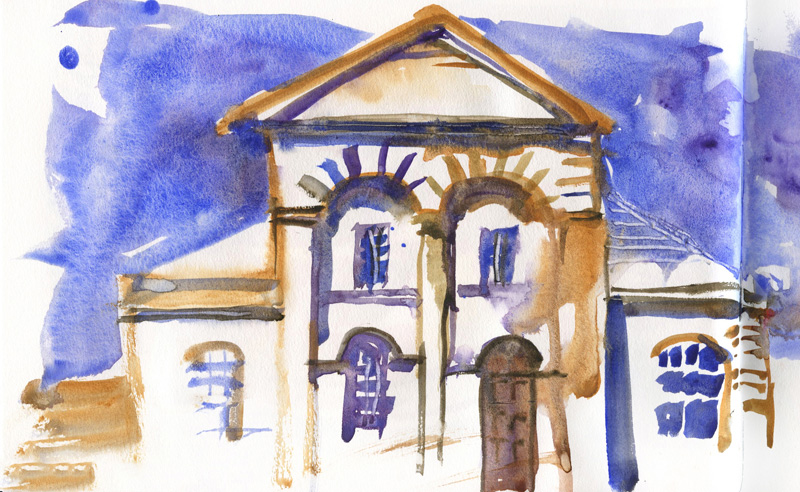
One of the things that I love about keeping a sketchbook and sketching regularly is that you never not what direction your art might take. The regular habit puts you in the space that can lead to the unexpected. Last week, I started keeping a food diary and decided to paint with no lines…
This week this state of linelessness has taken over…and interestingly extended to my architecture sketching.
What is really fun about this is that it is so different from my normal approach of clearly defining edges according to the architectural form of a building. This week I have just been playing with shapes. In the delightful tension between painter vs architect, I think the painter is winning at the moment!

My first sketch was from a photo (I am heading to Tasmania for some workshops next month) and I was drawing with paint here and trying not to describe every element the same way. Really trying to make the most of the power of the white on the page as well.
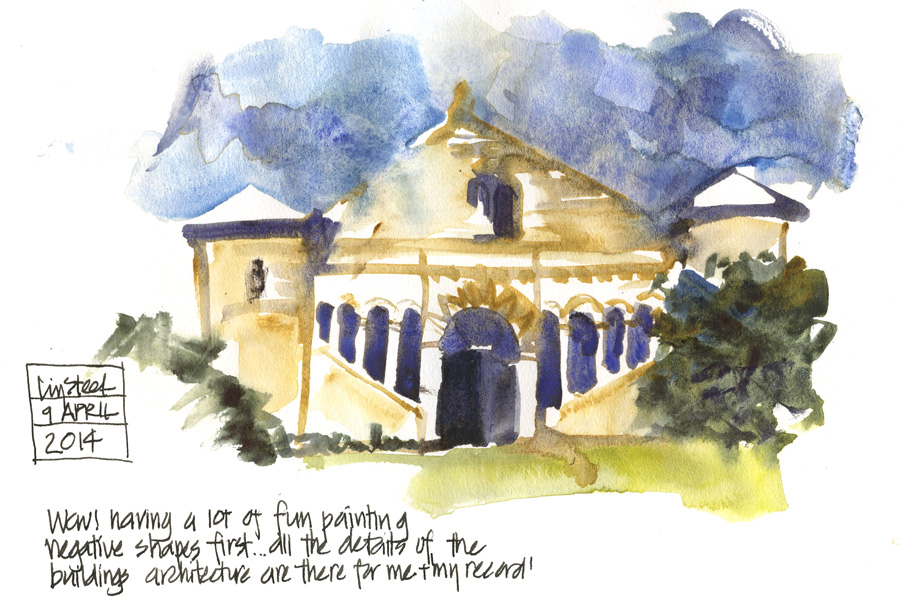
The next sketch is another Tasmanian building … yes, it is from a photo but I am testing new ideas. I find it useful to do this from photos at home so I am ready to go when I am next out and about
This time I started with the openings and worked my way around from there. The very last thing that I did was to add those paint lines that describe the architectural details – the columns and the moulding details.
I am not finding this hard or out of my ‘comfort zone'(not a term that I like using as my comfort zone is to push myself in new directions all the time) but it is VERY weird for my architect identity to be painting negatively. I love defining volumes by lines but this is the reverse…ah! so much fun! I thrive on this tension between the painter and the architect inside of me.
(St Marks – Pontville by Blackburn one of my favourite buildings in Tasmania)
I think I am becoming addicted……
I took a photo after my first step – once again drawing shapes first and not the important edges.

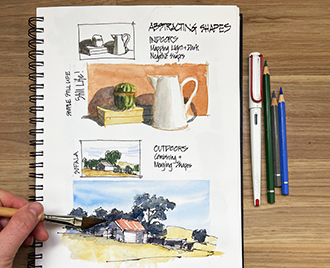

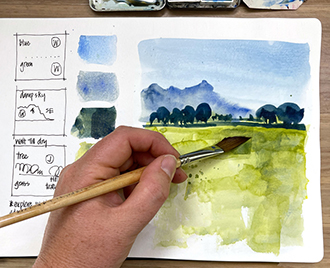
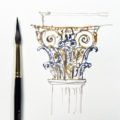
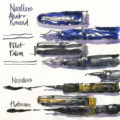
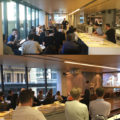
NEWSLETTER
Subscribe for first notification of workshop + online classes and more.